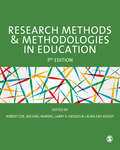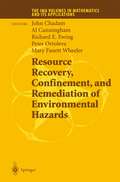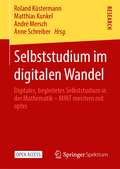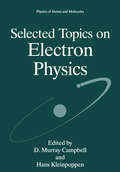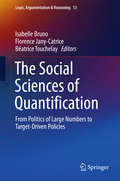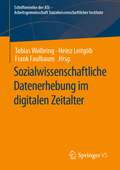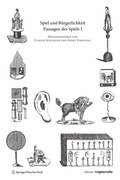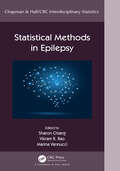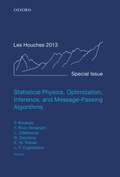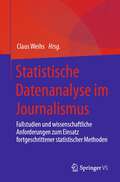- Table View
- List View
Research Methods and Methodologies in Education
Your #1 resource for carrying out educational research as part of postgraduate study. High-quality educational research requires careful consideration of every aspect of the process. This all-encompassing textbook written by leading international experts gives you considered overview of principles that underpin research, and key qualitative, quantitative and mixed methods for research design, data collection and analysis. This third edition includes four new chapters: Disseminating your research Data science and computational research methods Observational methods Analysis of variance (ANOVA) Plus a new Research essentials feature that highlights key ‘must-haves’ or misconceptions relating to each methodological approach, research design or analytical tool discussed. This is essential reading for postgraduate students on education courses and early career researchers looking to sharpen their research practice.
Resource Recovery, Confinement, and Remediation of Environmental Hazards (The IMA Volumes in Mathematics and its Applications #131)
This IMA Volume in Mathematics and its Applications RESOURCE RECOVERY, CONFINEMENT, AND REMEDIATION OF ENVIRONMENTAL HAZARDS contains papers presented at two successful one-week workshops: Confine ment and Remediation of Environmental Hazards held on January 15-19, 2000 and Resource Recovery, February 9-13, 2000. Both workshops were integral parts of the IMA annual program on Mathematics in Reactive Flow and Transport Phenomena, 1999-2000. We would like to thank John Chadam (University of Pittsburgh), Al Cunningham (Montana State Uni versity), Richard E. Ewing (Texas A&M University), Peter Ortoleva (In diana University), and Mary Fanett Wheeler (TICAM, The University of Texas at Austin) for their excellent work as organizers of the meetings and for editing the proceedings. We take this opportunity to thank the National Science Foundation for their support of the IMA. Series Editors Douglas N. Arnold, Director of the IMA Fadil Santosa, Deputy Director of the IMA v PREFACE Advances in resource recovery, and confinement/remediation of envi ronmental hazards requires a coordinated, interdisciplinary effort involving mathematicians, scientists and engineers. The intent of this collection of papers is to summarize recent theoretical, computational, and experimen tal advances in the theory of phenomena in porous media, with the intent to identify similarities and differences concerning applications related to both resource recovery and confinement and remediation of environmental hazards.
Rotation
This diagram shows three triangles; the original triangle and its rotation in two different directions to two new positions. A locator dot and title are shown. These must always be at the top left of the page when the image is the right way up. There is a graph with all four quadrants showing, and the x and y axes ranging from -3 to 3. The x and the y axes intersect at the origin marked by an X. Axes values are positive to the right and to the top of the diagram. Axes values are negative to the left and to the bottom of the diagram. Not all axis division marks are labelled. Some of the braille uses maths code notation. When an object is rotated it stays the same shape but its position and orientation change. The original triangle is in the top left quadrant. The triangle rotated 90? clockwise is to the right. The triangle rotated 180? anticlockwise is shown in the bottom right quadrant. Their path of movement is indicated by curved heavy dashed arc lines. Note the 90? arc in the top right quadrant is broken in the tactile version of the graph to allow a braille label to be clearly read.
Rotation
This diagram shows three triangles; the original triangle and its rotation in two different directions to two new positions. A locator dot and title are shown. These must always be at the top left of the page when the image is the right way up. There is a graph with all four quadrants showing, and the x and y axes ranging from -3 to 3. The x and the y axes intersect at the origin marked by an X. Axes values are positive to the right and to the top of the diagram. Axes values are negative to the left and to the bottom of the diagram. Not all axis division marks are labelled. Some of the braille uses maths code notation. When an object is rotated it stays the same shape but its position and orientation change. The original triangle is in the top left quadrant. The triangle rotated 90? clockwise is to the right. The triangle rotated 180? anticlockwise is shown in the bottom right quadrant. Their path of movement is indicated by curved heavy dashed arc lines. Note the 90? arc in the top right quadrant is broken in the tactile version of the graph to allow a braille label to be clearly read.
Rotation
This diagram shows three triangles; the original triangle and its rotation in two different directions to two new positions. A locator dot and title are shown. These must always be at the top left of the page when the image is the right way up. There is a graph with all four quadrants showing, and the x and y axes ranging from -3 to 3. The x and the y axes intersect at the origin marked by an X. Axes values are positive to the right and to the top of the diagram. Axes values are negative to the left and to the bottom of the diagram. Not all axis division marks are labelled. Some of the braille uses maths code notation. When an object is rotated it stays the same shape but its position and orientation change. The original triangle is in the top left quadrant. The triangle rotated 90? clockwise is to the right. The triangle rotated 180? anticlockwise is shown in the bottom right quadrant. Their path of movement is indicated by curved heavy dashed arc lines. Note the 90? arc in the top right quadrant is broken in the tactile version of the graph to allow a braille label to be clearly read.
The Science of Bradley Efron: Selected Papers (Springer Series in Statistics)
Nature didn’t design human beings to be statisticians, and in fact our minds are more naturally attuned to spotting the saber-toothed tiger than seeing the jungle he springs from. Yet scienti?c discovery in practice is often more jungle than tiger. Those of us who devote our scienti?c lives to the deep and satisfying subject of statistical inference usually do so in the face of a certain under-appreciation from the public, and also (though less so these days) from the wider scienti?c world. With this in mind, it feels very nice to be over-appreciated for a while, even at the expense of weathering a 70th birthday. (Are we certain that some terrible chronological error hasn’t been made?) Carl Morris and Rob Tibshirani, the two colleagues I’ve worked most closely with, both ?t my ideal pro?le of the statistician as a mathematical scientist working seamlessly across wide areas of theory and application. They seem to have chosen the papers here in the same catholic spirit, and then cajoled an all-star cast of statistical savants to comment on them.
Search Theory: Some Recent Developments
On the solution of an optimal search problem with an exponential detection function. Covers one- and two-sided detection problems by furnishing continuous and discret time strategies; examines two-sided search strategies with solutions in hide and seek games in many discrete and continuous bounded
Selbststudium im digitalen Wandel: Digitales, begleitetes Selbststudium in der Mathematik – MINT meistern mit optes
Selbststudium ist ein wichtiges Element im Zuge der Digitalisierungsbestrebungen an Hochschulen. Das Projekt optes widmet sich dem digitalen, begleiteten Selbststudium im Fach Mathematik. Es bietet mit seinen webbasierten Angeboten die Möglichkeit, das Selbstlernen in der Studienvorbereitung zu unterstützen, um so die Abbruchquoten in MINT-Fächern zu reduzieren. Neben dem Studienvorbereitungsprogramm und Assessment-Tools in der Mathematik im Lernmanagementsystem ILIAS wurden in optes diverse Materialien zur Lernprozessbegleitung entwickelt, inklusive adaptiver Lernempfehlungen, diagnostischer Testverfahren zur Prüfung des Wissensstandes (vor und während des Studiums), Selbstreflexionstools und überfachlicher Lernmodule sowie persönliche E-Mentoring- und E-Tutoring-Programme. Der vorliegende Open-Access-Sammelband stellt die wissenschaftlichen Erkenntnisse und praktischen Umsetzungen aus dem Projektkontext von optes dar.
Selected Topics on Electron Physics (Physics of Atoms and Molecules)
In the spring of 1970 Peter Farago organised a three-day conference on Polarised Electron Beams at Carberry Tower, near Edinburgh. Although the development of the gallium arsenide source, which was to revolutionise the world of experimental polarised electron physics, was still some years in the future, the meeting provided an important forum for the exchange of ideas among theoreticians and experimentalists engaged in both high and low energy electron collision studies. As soon as the decision had been taken to hold the 5th European Conference on Atomic and Molecular Physics in Edinburgh in 1995, it occurred to the editors of the present volume that it would be highly appropriate to mark the twenty-fifth anniversary of the Carberry Tower Conference by organising an ECAMP satellite meeting in honour of Peter Farago. The opportunity to pay tribute to Peter's many important contributions in the broad field of electron physics attracted colleagues from allover the world to the symposium, which was held in the rooms of the Royal Society of Edinburgh on 31st March and 1st April 1995. Peter himself, now Professor Emeritus at the University of Edinburgh, was present throughout the meeting. We were particularly happy to welcome back to Edinburgh many participants in the original Carberry Tower conference; these included Professor P. G. Burke, Professor J. Kessler, Professor E. Reichert and Professor H. C. Siegmann, whose review papers had been highlights of the 1970 meeting.
Semigroup Theory and Evolution Equations: The Second International Conference
Proceedings of the Second International Conference on Trends in Semigroup Theory and Evolution Equations held Sept. 1989, Delft University of Technology, the Netherlands. Papers deal with recent developments in semigroup theory (e.g., positive, dual, integrated), and nonlinear evolution equations (e
Similarity
This diagram consists of two pairs of similar shapes; the two in the middle of the page are similar and the bottom two are also similar. A locator dot and title are shown. These must always be at the top left of the page when the image is the right way up. Similarity is a type of enlargement. The corresponding sides are in the same ratio - the ratio is the scale factor of the enlargement.
Similarity
This diagram consists of two pairs of similar shapes; the two in the middle of the page are similar and the bottom two are also similar. A locator dot and title are shown. These must always be at the top left of the page when the image is the right way up. Similarity is a type of enlargement. The corresponding sides are in the same ratio - the ratio is the scale factor of the enlargement.
Similarity
This diagram consists of two pairs of similar shapes; the two in the middle of the page are similar and the bottom two are also similar. A locator dot and title are shown. These must always be at the top left of the page when the image is the right way up. Similarity is a type of enlargement. The corresponding sides are in the same ratio - the ratio is the scale factor of the enlargement.
Smittestopp − A Case Study on Digital Contact Tracing (Simula SpringerBriefs on Computing #11)
This open access book describes Smittestopp, the first Norwegian system for digital contact tracing of Covid-19 infections, which was developed in March and early April 2020. The system was deployed after five weeks of development and was active for a little more than two months, when a drop in infection levels in Norway and privacy concerns led to shutting it down. The intention of this book is twofold. First, it reports on the design choices made in the development phase. Second, as one of the only systems in the world that collected population data into a central database and which was used for an entire population, we can share experience on how the design choices impacted the system's operation. By sharing lessons learned and the challenges faced during the development and deployment of the technology, we hope that this book can be a valuable guide for experts from different domains, such as big data collection and analysis, application development, and deployment in a national population, as well as digital tracing.
The Social Sciences of Quantification: From Politics of Large Numbers to Target-Driven Policies (Logic, Argumentation & Reasoning #13)
This book details how quantification can serve both as evidence and as an instrument of government, whether when dealing with statistics on employment, occupational health and economic governance, or when developing public management or target-driven policies. In the process, it presents a thought-provoking homage to Alain Desrosières, who pioneered ways to study large numbers and the politics underlying them.It opens with a summary of Desrosières's contributions to the field in which several generations of researchers detail how this statistician and historian profoundly influenced them. This tribute, based on personal testimonies, bears witness to the vitality of the school of thought and analytical framework Desrosières initiated. Next, a collection of essays explores the statistical argument in the neoliberal era, examining issues such as counting the homeless in Europe, measuring the performance of public services, and quantifying the effects of public action on the unemployed in France.The third part details the uses of quantification. It reveals that although statistics are frequently used to the advantage of those in power, they can also play a vital role in challenging and resisting both the conventions underlying the measurements as well as the measurements themselves.Featuring the work of economists, historians, political scientists, sociologists, and statisticians, this title provides readers with a thoughtful look at an influential figure in the history of statistics. It also shows how statistics are used to direct public policy, the degree of conflict that is possible in their production, and the disputes that can develop around their uses.
Sozialwissenschaftliche Datenerhebung im digitalen Zeitalter (Schriftenreihe der ASI - Arbeitsgemeinschaft Sozialwissenschaftlicher Institute)
Neue Möglichkeiten der Datenerhebung mittels digitaler Technologien, aber auch die Verfügbarkeit prozessproduzierter Daten, die bei der Nutzung sozialer Medien, Smartphones oder sogenannter Wearables anfallen, bergen ein enormes Potenzial für die empirische Sozialforschung. Es erscheint vor diesem Hintergrund nicht übertrieben von einer digitalen Revolution in den Sozialwissenschaften zu sprechen, welche die empirische Sozialforschung mit neuen Herausforderungen und Fragestellungen konfrontiert. Der vorliegende Sammelband widmet sich diesem Themenkomplex mit überblicksartigen Beiträgen, Untersuchungen zur Datenqualität und praxisnahen Anwendungsbeispielen.
Special Functions in Fractional Calculus and Engineering (Mathematics and its Applications)
Special functions play a very important role in solving various families of ordinary and partial differential equations as well as their fractional-order analogs, which model real-life situations. Owing to the non-local nature and memory effect, fractional calculus is capable of modeling many situations which arise in engineering. This book includes a collection of related topics associated with such equations and their relevance and significance in engineering. Special Functions in Fractional Calculus and Engineering highlights the significance and applicability of special functions in solving fractional-order differential equations with engineering applications. This book focuses on the non-local nature and memory effect of fractional calculus in modeling relevant to engineering science and covers a variety of important and useful methods using special functions for solving various types of fractional-order models relevant to engineering science. This book goes on to illustrate the applicability and usefulness of special functions by justifying their numerous and widespread occurrences in the solution of fractional-order differential, integral, and integrodifferential equations.This book holds a wide variety of interconnected fundamental and advanced topics with interdisciplinary applications that combine applied mathematics and engineering sciences, which are useful to graduate students, Ph.D. scholars, researchers, and educators interested in special functions, fractional calculus, mathematical modeling, and engineering.
Spiel und Bürgerlichkeit: Passagen des Spiels I (Edition Angewandte)
Spiele verändern sich. Sie sind der Wunsch- und Zerrspiegel jeder Gesellschaft, die sie spielt. In der Kultur der Bürgerlichkeit geraten viele Spiele in eine „Zone wachsamer Aufmerksamkeit" (D. Kühme) und sind einem vielgestaltigen kulturellen Transformationsprozess unterworfen: Spiele werden missliebig oder verboten, sie werden lehrreich und schön, ihre Obszönität wird domestiziert oder ihr Betrieb verstaatlicht."Spiel und Bürgerlichkeit" ist den Veränderungen in der Grammatik und Semantik der Spiele gewidmet. Die Beiträge reichen von Cardanos Theorie des Glücksspiels in der frühen Neuzeit, den Karten-, Brett- und Gesellschaftsspiele im Bürgertum, dem Aufstieg und dem Verschwinden der Lotterien, über die Betrachtung der Geschlechterrollen im Spiel und der Funktion von Spielervereinigungen bis zur Analyse der Topografie und Architektur der Kasinos am Mississippi zu Zeiten Mark Twains.Ergänzt wird das Werk durch eine ausführliche Bild- und Lesestrecke, die Einschau ins Archiv der bürgerlichen Spiele nimmt und seltene Bilder und Textauszüge aus Spielebüchern und -traktaten der Zeit präsentiert.
Statistical Inference in Stochastic Processes
Covering both theory and applications, this collection of eleven contributed papers surveys the role of probabilistic models and statistical techniques in image analysis and processing, develops likelihood methods for inference about parameters that determine the drift and the jump mechanism of a di
Statistical Methods in Epilepsy (Chapman & Hall/CRC Interdisciplinary Statistics)
Epilepsy research promises new treatments and insights into brain function, but statistics and machine learning are paramount for extracting meaning from data and enabling discovery. Statistical Methods in Epilepsy provides a comprehensive introduction to statistical methods used in epilepsy research. Written in a clear, accessible style by leading authorities, this textbook demystifies introductory and advanced statistical methods, providing a practical roadmap that will be invaluable for learners and experts alike.Topics include a primer on version control and coding, pre-processing of imaging and electrophysiological data, hypothesis testing, generalized linear models, survival analysis, network analysis, time-series analysis, spectral analysis, spatial statistics, unsupervised and supervised learning, natural language processing, prospective trial design, pharmacokinetic and pharmacodynamic modeling, and randomized clinical trials.Features: Provides a comprehensive introduction to statistical methods employed in epilepsy research Divided into four parts: Basic Processing Methods for Data Analysis; Statistical Models for Epilepsy Data Types; Machine Learning Methods; and Clinical Studies Covers methodological and practical aspects, as well as worked-out examples with R and Python code provided in the online supplement Includes contributions by experts in the field The handbook targets clinicians, graduate students, medical students, and researchers who seek to conduct quantitative epilepsy research. The topics covered extend broadly to quantitative research in other neurological specialties and provide a valuable reference for the field of neurology.
Statistical Physics, Optimization, Inference, and Message-Passing Algorithms: Lecture Notes of the Les Houches School of Physics: Special Issue, October 2013 (Lecture Notes of the Les Houches Summer School)
In the last decade, there have been an increasing convergence of interest and methods between theoretical physics and fields as diverse as probability, machine learning, optimization and compressed sensing. In particular, many theoretical and applied works in statistical physics and computer science have relied on the use of message passing algorithms and their connection to statistical physics of spin glasses. The aim of this book, especially adapted to PhD students, post-docs, and young researchers, is to present the background necessary for entering this fast developing field.
Statistische Datenanalyse im Journalismus: Fallstudien und wissenschaftliche Anforderungen zum Einsatz fortgeschrittener statistischer Methoden
Dieses Buch zeigt anhand von journalistischen Fallbeispielen, warum und wie fortgeschrittene statistische Analysemethoden eingesetzt werden können, um aussagekräftige journalistische Informationen aus Daten zu extrahieren. Gleichzeitig setzt das Buch einen Anforderungsrahmen für die datenjournalistische Arbeit bezüglich Datenkompetenz und -visualisierung, dem Einsatz von Algorithmen sowie daten-ethischen Anforderungen und der Überprüfung externer Studien. Ziel ist es, die Qualität und Aussagekraft datenjournalistischer Arbeiten zu verbessern, welche, neben der angemessenen Erfassung und Aufbereitung von Daten, wesentlich von einer adäquaten Datenanalyse abhängen. Aber wie statistisch arbeiten Datenjournalist:innen heute eigentlich? Und wie statistisch können oder sollten sie arbeiten, um den Ansprüchen ihrer Leserschaft in Sachen Verständlichkeit gerecht zu werden, auch mit Blick auf deren unterschiedliches mathematisch-statisches Vorwissen? Das Buch zielt darauf ab, diese Fragen zu beantworten, indem es weiterführende statistische Methoden anhand von Fallstudien untersucht. Es verdeutlicht, warum diese Methoden auch im journalistischen Kontext oftmals problemangemessener sind und tiefer gehende Erkenntnisse liefern als vereinfachte Analysen und Basismethoden. Die Fallstudien decken dabei die wichtigsten statistischen Methoden ab: Verteilungen und Tests, Klassifikation, Regression, Zeitreihenanalyse, Clusteranalyse, Analyse von sequentiellen Daten ohne direkten Zeitbezug, Verwendung von Vorwissen und geplante Studien.
Stochastic Analysis, Filtering, and Stochastic Optimization: A Commemorative Volume to Honor Mark H. A. Davis's Contributions
This volume is a collection of research works to honor the late Professor Mark H.A. Davis, whose pioneering work in the areas of Stochastic Processes, Filtering, and Stochastic Optimization spans more than five decades. Invited authors include his dissertation advisor, past collaborators, colleagues, mentees, and graduate students of Professor Davis, as well as scholars who have worked in the above areas. Their contributions may expand upon topics in piecewise deterministic processes, pathwise stochastic calculus, martingale methods in stochastic optimization, filtering, mean-field games, time-inconsistency, as well as impulse, singular, risk-sensitive and robust stochastic control.
Stochastic Differential Systems, Stochastic Control Theory and Applications: Proceedings of a Workshop, held at IMA, June 9-19, 1986 (The IMA Volumes in Mathematics and its Applications #10)
This IMA Volume in Mathematics and its Applications STOCHASTIC DIFFERENTIAL SYSTEMS, STOCHASTIC CONTROL THEORY AND APPLICATIONS is the proceedings of a workshop which was an integral part of the 1986-87 IMA program on STOCHASTIC DIFFERENTIAL EQUATIONS AND THEIR APPLICATIONS. We are grateful to the Scientific Committee: Daniel Stroock (Chairman) WendeIl Flerning Theodore Harris Pierre-Louis Lions Steven Orey George Papanicolaou for planning and implementing an exciting and stimulating year-long program. We es pecially thank WendeIl Fleming and Pierre-Louis Lions for organizing an interesting and productive workshop in an area in which mathematics is beginning to make significant contributions to real-world problems. George R. Seil Hans Weinberger PREFACE This volume is the Proceedings of a Workshop on Stochastic Differential Systems, Stochastic Control Theory, and Applications held at IMA June 9-19,1986. The Workshop Program Commit tee consisted of W.H. Fleming and P.-L. Lions (co-chairmen), J. Baras, B. Hajek, J.M. Harrison, and H. Sussmann. The Workshop emphasized topics in the following four areas. (1) Mathematical theory of stochastic differential systems, stochastic control and nonlinear filtering for Markov diffusion processes. Connections with partial differential equations. (2) Applications of stochastic differential system theory, in engineering and management sci ence. Adaptive control of Markov processes. Advanced computational methods in stochas tic control and nonlinear filtering. (3) Stochastic scheduling, queueing networks, and related topics. Flow control, multiarm bandit problems, applications to problems of computer networks and scheduling of complex manufacturing operations.
